Rescuers on mission to save doomed Titan submersible reveal moment they discovered debris field on ocean floor and realized all onboard were dead
The rescuers called upon to save the doomed Titan submarine recall the moment they discovered debris on the ocean floor and realized all five men on board were dead.
A desperate search was underway for the ship, owned and operated by OceanGate Expeditions, which took a crew to view the wreckage of the Titanic 10,000 feet underwater for $250,000 per person.
A team from Pelagic Research Services, which operates remote-controlled vehicles thousands of feet below the surface, was tasked with finding the Titan before it ran out of oxygen.
“As we entered the debris field, there was a pause,” Pelagic CEO Ed Cassano said Sky news.
“Everyone is a professional, but you can’t help but be influenced… it took us a while to really understand and think about what it meant.”
The rescuers called upon to rescue the doomed Titan submarine remember the moment they discovered debris on the ocean floor and realized all five men on board were dead
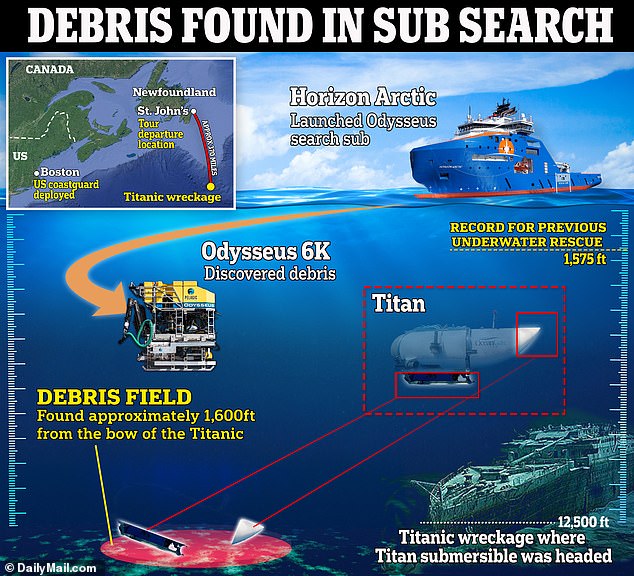
The Pelagic Research Services vehicle, the Odysseus 6K, reached the seabed after days of searching and found debris from the submarine about 500 meters from the bow of the Titanic
Titan launched around 4 a.m. on June 18, but lost communication with the mothership just an hour and 45 minutes later.
The submarine of the Pelagic team, Odysseus 6K reached the seabed after days of searching and found debris from the submarine about 500 meters from the bow of the Titanic.
The Titan did imploded and killed everyone on board due to the enormous water pressure.
Tourists Hamish Harding, 58, Shahzada Dawood, 48, and his son Sulaiman Dawood, 19, French Navy pilot Paul-Henry Nargeolet and OceanGate CEO Stockton Rush all died on the submarine.
The Pelagic Research Services immediately became involved in the frantic search for the missing submarine and were told that the Titan’s oxygen was expected to run out within four days.
The Odysseus, one of the few remotely operated vehicles (ROV) capable of reaching the depths of the Titanic wreck, was launched.
It was planned to hook onto the Titan and raise it 3,000 meters where it would be joined by another ROV that would help bring it to the surface.
But the team discovered an area of debris about 500 meters away from the Titanic wreck and they immediately fell silent.
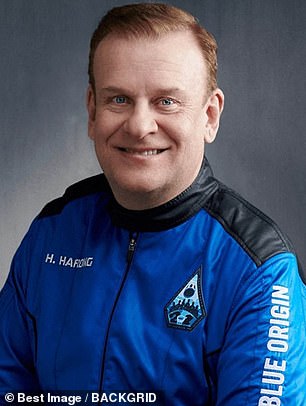

Five people had been on board, including British billionaire adventurer Hamish Harding (left) and Shahzada Dawood and his son Suleman, who was just 19.

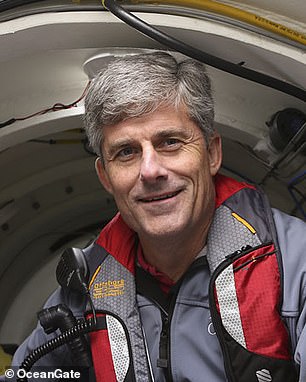
French Navy veteran PH Nargeolet (left) was in the submarine, along with Stockton Rush (right), CEO of the OceanGate Expedition
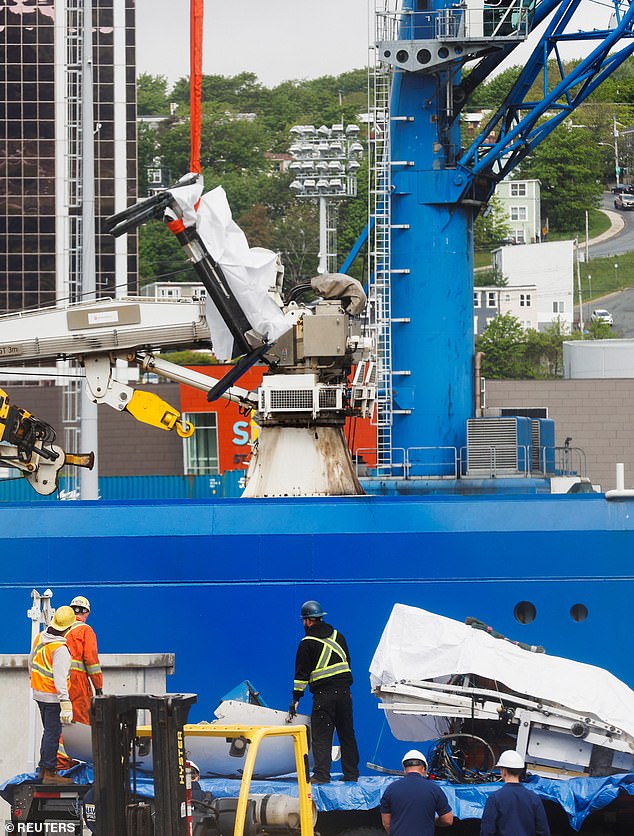
Salvaged pieces of OceanGate’s Titan submarine will be returned to the port of St. John’s in Newfoundland, Canada, on June 28
“We had spent four or five days… expecting to go there and perform a miracle,” deep-sea expert Jesse Doren told Sky.
“Obviously, our sense of disappointment is miniscule compared to the people close to the families of those who were lost.”
The families of the five men on board were subsequently informed of their deaths and the team began a salvage operation.
Cassano turned to the media to explain what happened several days later.
He held back tears and apologized before explaining that his team was still processing “a lot of emotions.”
The Pelagic rescue team was called out on June 18 when Doren received a call from a colleague.
He was asked if his ROV was ready to go before adding, “We may need some help.”
They rushed to a New York airport on June 19 and flew their equipment to Newfoundland in Canada, where the ship had launched.
“Our focus was on getting our crew on site ready to carry out a rescue… Our whole focus was finding these guys,” Doren told Sky News.
Cassano said, “Everyone’s first question was… how long will it take you to mobilize?
“We said twelve hours, we hoped to do it in eight hours. We did it in six.
‘Then the question was: how fast can the ship go? Normally the ship goes 10 to 11 knots, she 17. Our focus on arrival was to get into the water as quickly as possible.’
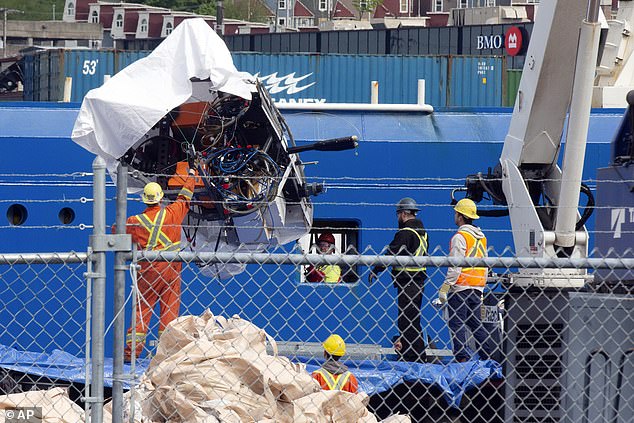
Debris from the Titan submarine, recovered from the ocean floor near the wreckage of the Titanic, is unloaded from the ship Horizon Arctic at the Canadian Coast Guard pier
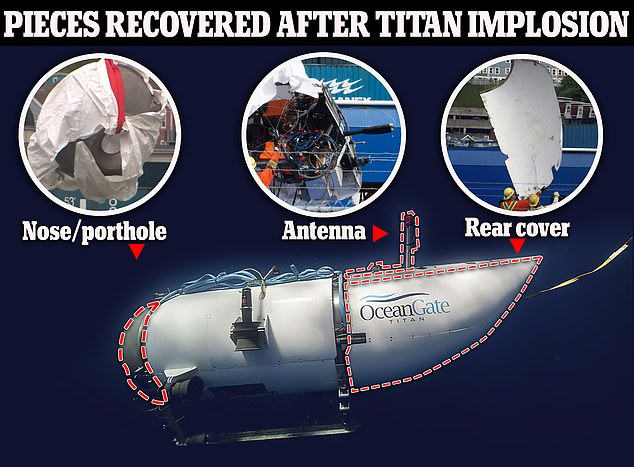
It took two hours for the Odysseus to reach the seabed, and Cassano thought of the people aboard the Titan and their families.
He said, “We always thought of the crew of the Titan. We always thought of the families.
“We thought about what was the best way for us to do a rescue, knowing that we were limited in time, knowing that the submarine was a big object to salvage.”
“We still had to do things safely, because there’s a lot of people at risk, a lot of equipment at risk, and you want to get it right,” added Doren.
“We knew we only had one shot at this.”
An investigation into the tragedy is ongoing by the Canada Transportation Safety Board.
Preliminary talks have been held with those on board OceanGate’s support vessel Polar Prince and the submarine’s wreck has been inspected.
No guilt or criminal and civil liability will be assigned after the investigation.
But it is being carried out to ensure that a similar disaster never happens again.
